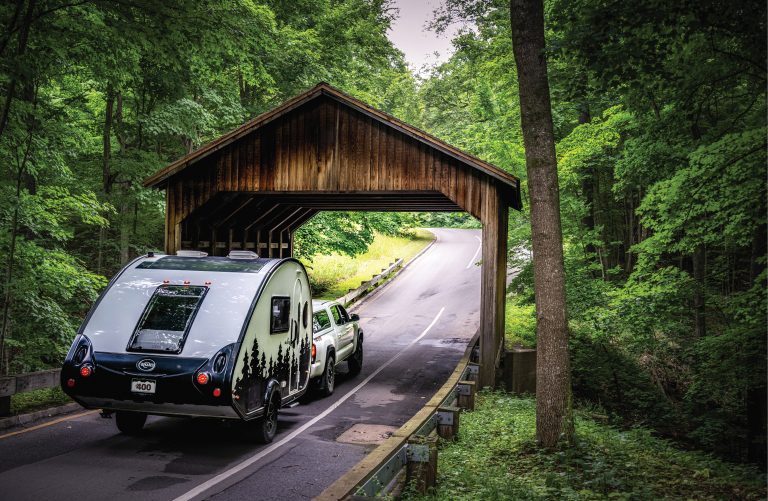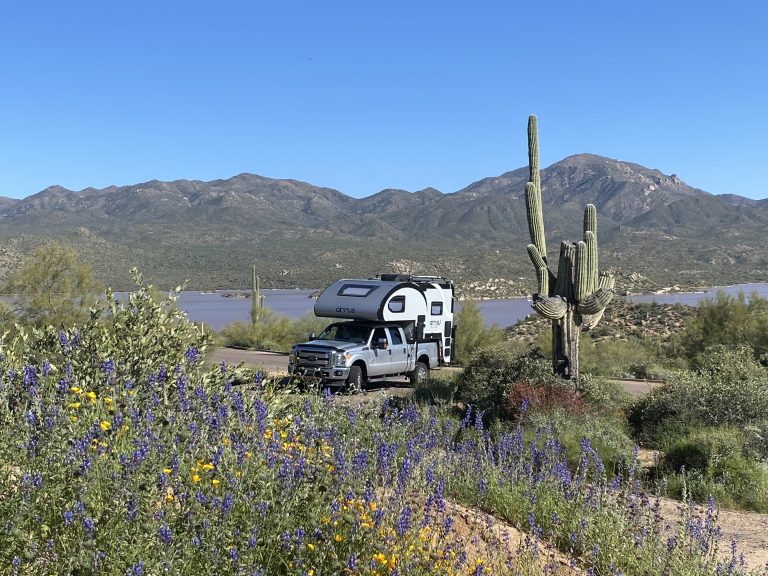Storing your camper for the winter? Before you do, there are certain tasks you need to undertake to make sure your RV is in tip-top shape when you’re ready to take it out on the road again.
This post covers general tips for preparing your RV’s water system and holding tanks. Then read Preparing Your Camper for Long-Term Storage for more advice. (As always, check your owner’s manual for specific instructions for your RV.)
NOTE: Draining the water system alone will not provide adequate cold weather protection. If the camper is to be unheated during freezing temperatures, consult your dealer for the best winterizing procedure for your climate. Your dealer can supply you with one of the special non-toxic types of antifreeze that are safe and approved for use in RV water systems. (Tech Tips: RV Antifreeze: Not All the Same provides a good explanation of the two types of RV antifreeze available.)
Holding Tanks
- Completely empty the freshwater as well as the black and gray holding tanks, then thoroughly deep clean the black tank.
- Backwash your system, either using the built-in backwash unit or a wand specifically for RV tank pressure cleaning.
- Finally, treat your tank with a biologically friendly enzyme cleaner. (Check Axle Addict’s detailed tips for freshwater and sewer tanks.)
Water Heater
- Drain your water tank by opening the drain plug or valve.
- ReserveAmerica recommends flushing out any sediment in the tank using a water heater tank rinsing wand, then leaving the drain plug open until spring.
- If your water heater uses anode rods—used to extend the life of your water heater by attracting corrosive elements—remove it until you’re ready to take your RV on the road again, according to Good Life RV. If the rods are a little on the skinny side, you may need to replace them. This YouTube video provides step-by-step instructions.
Water Pipes
- Remove any inline water filters, then drain all the pipes by flushing the toilet and opening all the hot and cold water faucets. Then cap all drains and close all faucets.
- Before adding RV/Marine antifreeze to your system, make sure to bypass the water heater. Check the owner’s manual for how to do it and where the valves are located. Then pump the RV antifreeze throughout the water system, opening faucets one by one and also flushing the toilet to get it to appear in the bowl. (See GoRVing’s post for detailed instructions.)
For more instructions on winterizing your RV, download Hannah Trailer Supply’s RV Winterization Step By Step Guide By Camco.
Recent Articles





